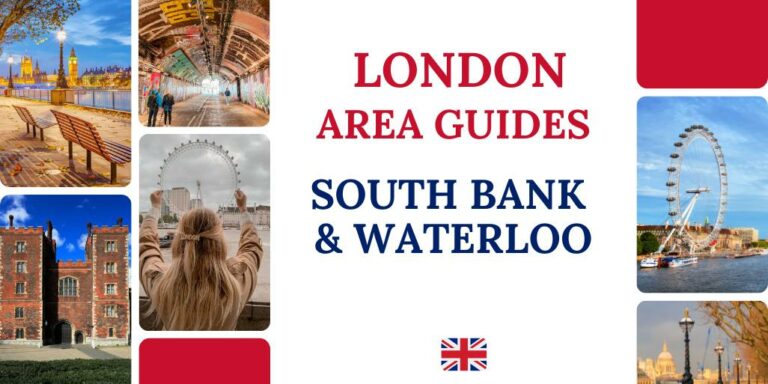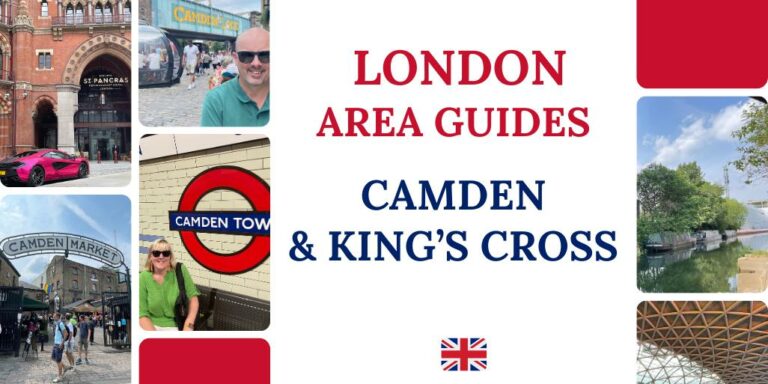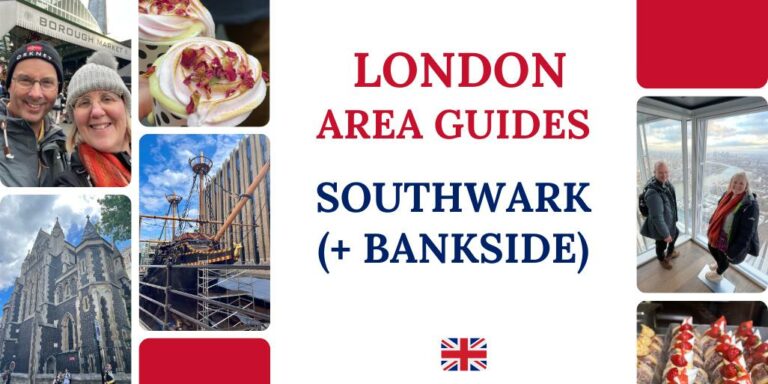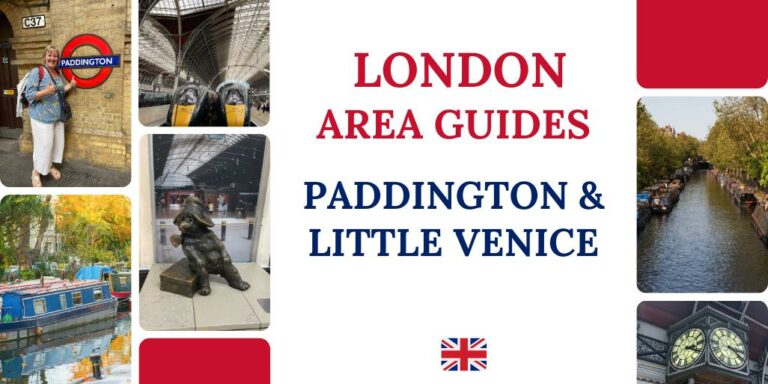Things to Do in the City of London | What to See + Where to Stay, Shop, + Eat
The City of London area is the oldest part of the UK capital, and is commonly known as the Square Mile. It’s the historic and financial heart of London, where both the Bank of England and the London Stock Exchange are located. From Monday to Friday, many commuters travel to work here on a daily basis.
This busy district is based on what was once Londinium, the Roman settlement on the Thames, which dates back to about AD 50. It sits by the banks of the river, between the East End and the West End. The area covers approximately one square mile, hence the name.
Some major London attractions can be found in the City of London borough. Which, in fact, is not a borough at all, but technically England’s smallest ceremonial county.
Whether you’re seeking free things to do in the City of London, or don’t mind paying to visit some of the big-hitting sights, this guide will take you through all you need to know. Also covered is where to stay, shop, and eat in this part of London.
Keep reading so you can find out all there is to know about the riverside square mile known as the City of London!
Who is the City of London best for?
- Finance nerds
- Culture vultures
- Cathedral worshippers
- Fans of city skyline views
Explore the City of London with Ease Using Our London Travel Planning Map! 🗺️✨
All the incredible places mentioned in this guide—including top sights, hidden gems, restaurants, and more—are already pinned on our interactive London Travel Planning Map!
✔️ Easily navigate the area with step-by-step directions
✔️ Save time—no need to search for locations yourself
✔️ Access on any device—view on your phone while exploring
🔗 Click here to get the map and start planning your perfect London trip!
Top 15 Things to Do in the City of London
St Paul’s Cathedral

One of the top things to see in the City of London is St Paul’s Cathedral. The masterpiece of celebrated architect Sir Christopher Wren, St Paul’s was deliberately built at the city’s highest point, on Ludgate Hill. So the sweeping views from the site are well worth visiting for.
As well as being a church, St Paul’s is an art gallery, has starred in films and TV shows, and is home to the famous Whispering Gallery.
Discover all St Paul’s has to offer in our complete visiting St Paul’s Cathedral guide.
Click here to buy tickets for St Paul’s Cathedral
London Stock Exchange
Though you cannot go inside, it’s worth seeing the famous London Stock Exchange for yourself. All trading here has been done electronically since the mid 1980s. The Stock Exchange is now situated on Paternoster Square, close to St Paul’s.
Millennium Bridge
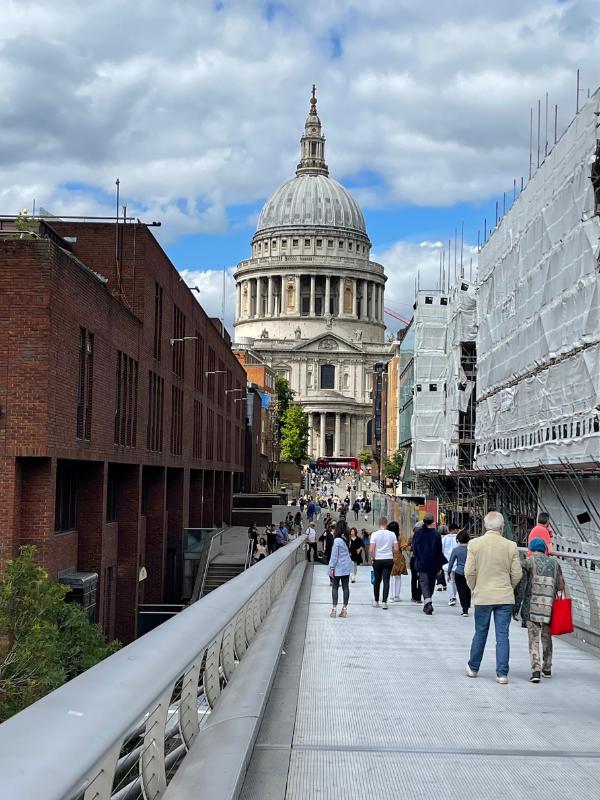
Often called the wobbly bridge, the Millennium Bridge can be found close to St Paul’s. The suspension bridge spans the Thames, and is set among some of London’s most famous sights.
It’s for pedestrians only, and is free to cross. The bridge doesn’t wobble any more, following significant remedial works that took place in 2001. It’s a great place for capturing London on camera.
Bank of England
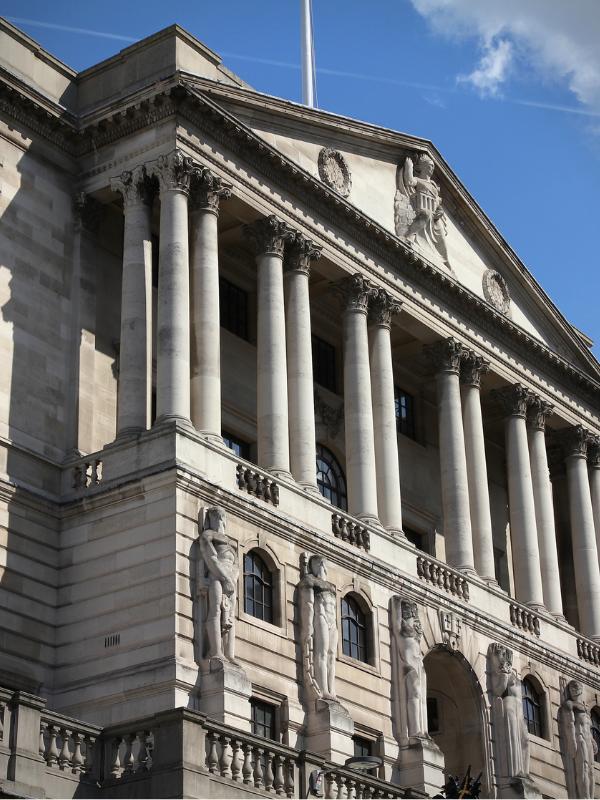
Located on the delightfully named Threadneedle Street, the Bank of England dates back to 1694. It’s the UK’s central bank, and the eighth-oldest in the world. A satirical cartoon from 1797 coined the nickname “The Old Lady of Threadneedle Street.”
The bank has a free museum you can visit. In line with city hours, this is only open from Monday to Friday, between 10am and 5pm, except for bank holidays. It also opens until 8pm on the third Thursday of each month.
Barbican Centre
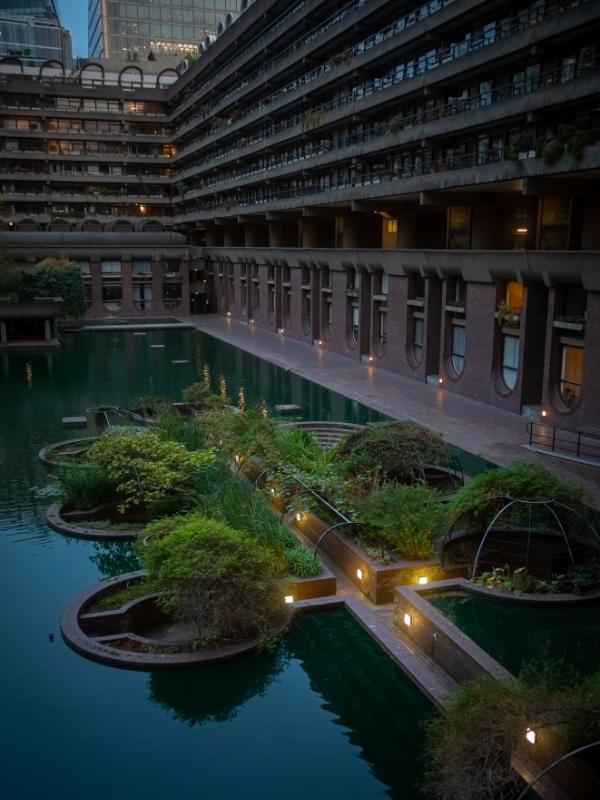
This Brutalist building within the square mile is Europe’s largest performing arts centre. All sorts of cultural events take place here, including art exhibitions, music concerts, movie screenings, and theatre shows. It’s also famous for its distinctive concrete architecture.
Find out what’s on, or book an architectural tour, at the official Barbican Centre website.
Monument to the Great Fire of London
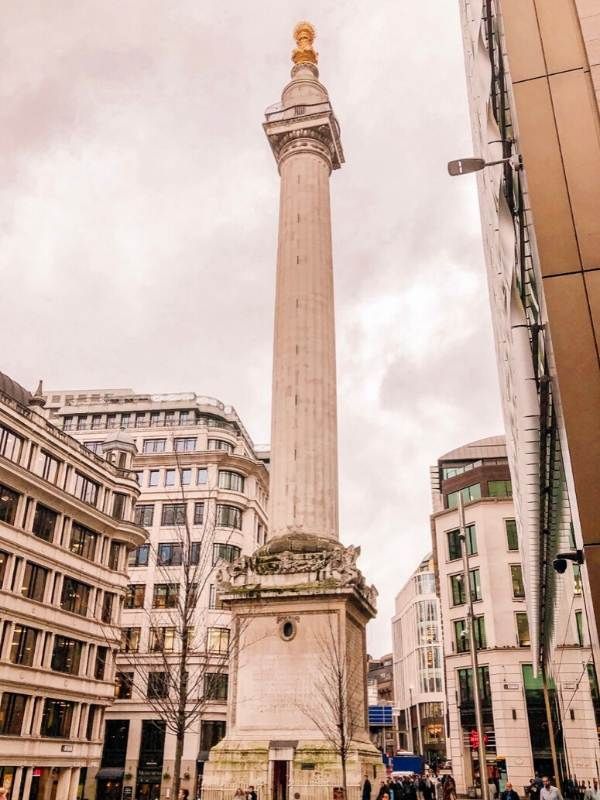
A viewing platform awaits those who climb up this fluted column near London Bridge. Like St Paul’s, it was designed by Sir Christopher Wren. It commemorates the Great Fire of London, which wreaked havoc in central London in 1666.
The Gherkin
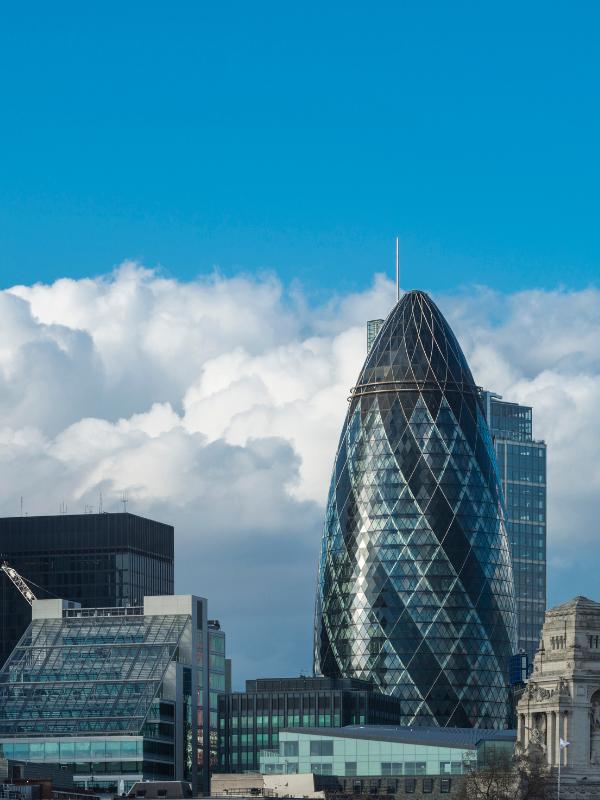
The Gherkin, aka 30 St Mary Axe, has been one of the most iconic London landmarks for the past two decades. It’s officially known as 30 St Mary Axe, after its address.
If you want to go inside, you’ll need to visit Helix restaurant or Iris bar, which are located on the 39th and 40th floors. Except for special events and the eatery and bar, the Gherkin isn’t normally open to the public.
Sky Garden
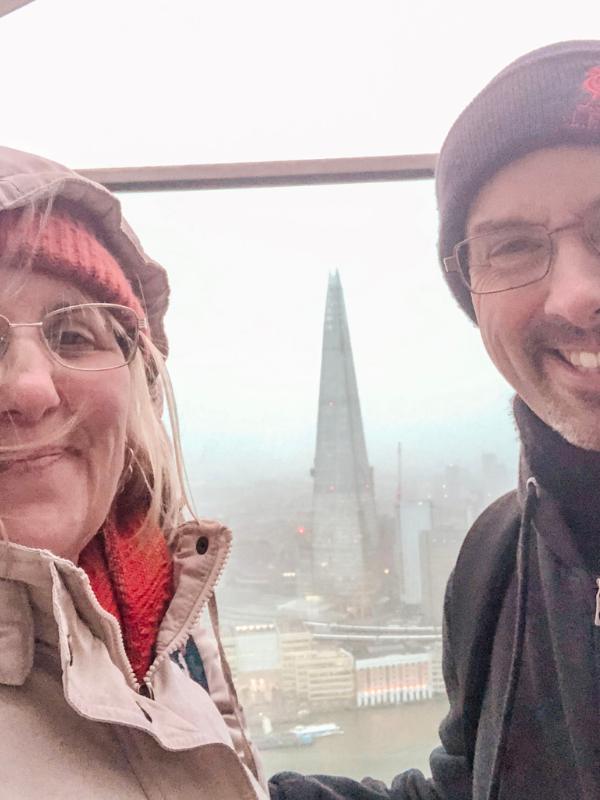
Housed in the iconic Walkie Talkie building, visiting the Sky Garden is one of the free and most fun things to do in the City of London. This indoor green space offers panoramic views over the city skyline. The garden is covered by a glass dome, and there’s also a couple of restaurants and bars here.
Pre book your free Sky Garden ticket in advance of your visit. While walk-ins are accepted, this is subject to availability.
Horizon 22
Relatively new to the London skyscraper scene is Horizon 22. Positioned on Bishopsgate, it’s second only to the Shard in terms of height. The viewing gallery here, which is 254 metres high, opened in late 2023, and you can visit for free.
As with the Sky Garden, it’s best to pre book a free ticket online before visiting.
St Dunstan in the East
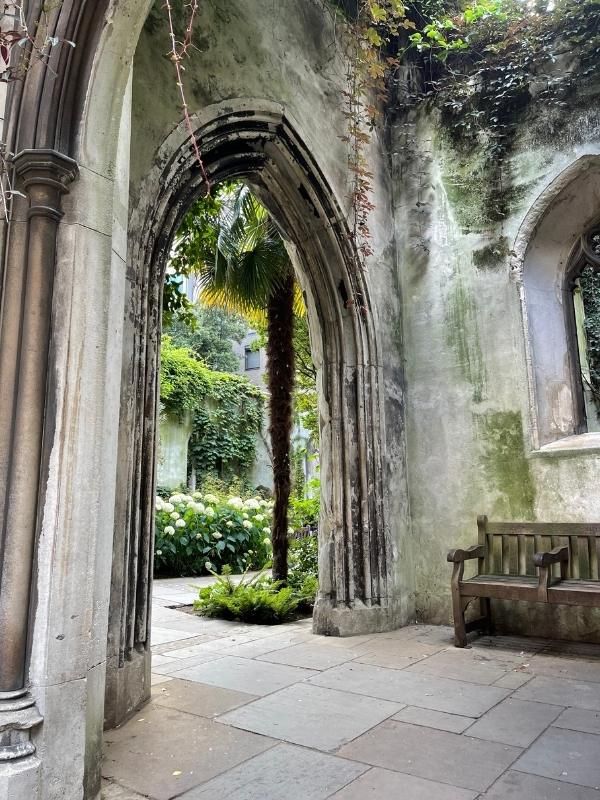
The design of this church is also down to Sir Christopher Wren church. It suffered a lot of damage during the Second World War, but the remains are set among an attractive public garden with fountains, benches, and appealing green foliage.
London Mithraeum
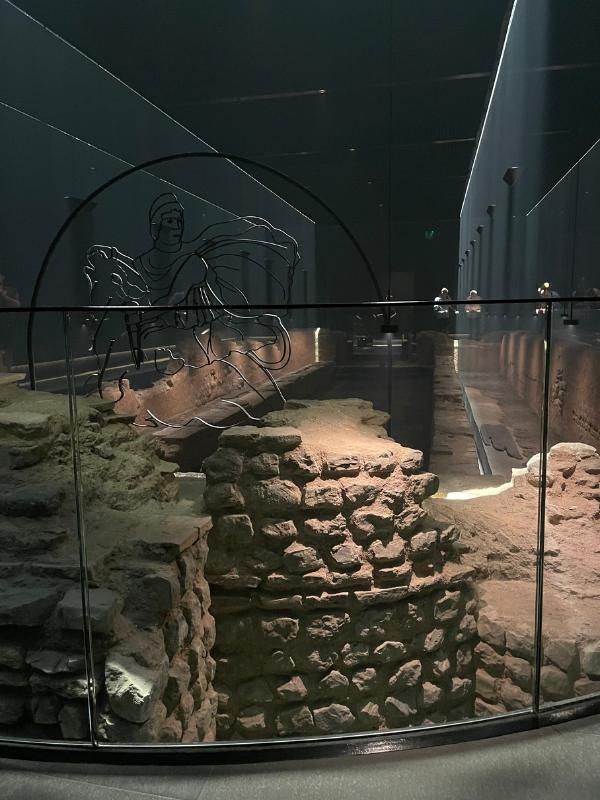
London Mithraeum – or the Temple of Mithraeum – harks back to Roman times in London. A Mithraeum is a type of temple, dedicated to Mithras, a mystery God. The remains were unearthed in 1954, during building work.
You can visit the Mithraeum for free. Pre booking is advised to secure your chosen time slot, though it isn’t essential.
City of London dragons
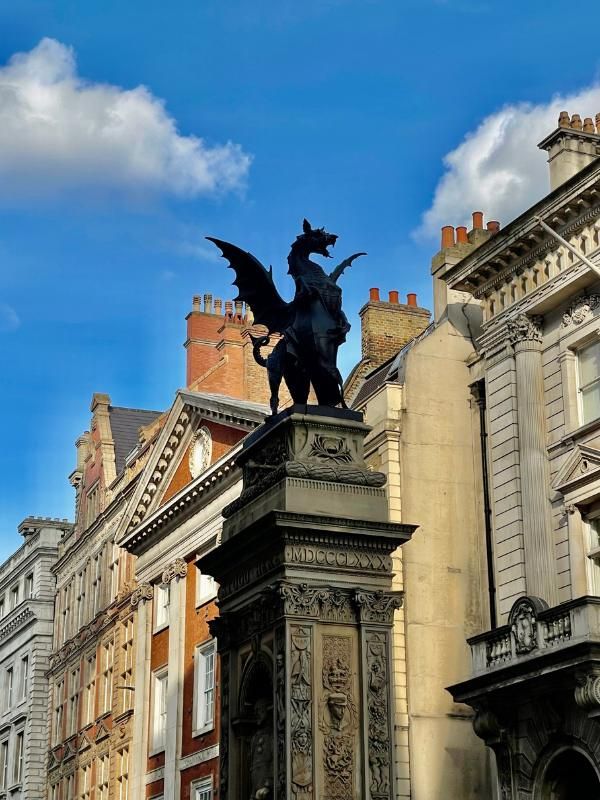
14 dragon statues can be found around the City of London. They’re said to have a protective purpose, and are made from cast iron painted silver, with red and white detailing. Each dragon has a shield, and this bears both the cross of St George and the City’s coat of arms. A red sword is a nod to St Paul.
You can spot dragons at Aldgate, Barbican, Blackfriars, Chancery Lane, Embankment, Farringdon, Liverpool Street, London Bridge, Temple Bar, and Tower Hill. They’re great for taking selfies as a unique souvenir of your time spent in the City!
Temple Bar
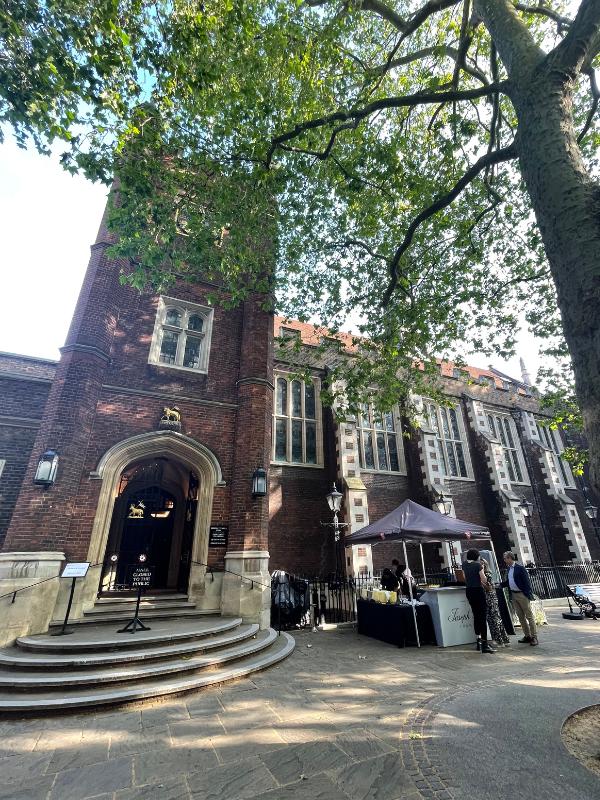
Temple Bar is an old gateway to the City of London. Its design is said to be the work of none other than Sir Christopher Wren. It comprises an arch made from Portland Stone, and dates from 1672.
Today, you can find the ceremonial entrance arch on Paternoster Square, opposite St Paul’s. In the past, it marked the point where The Strand and Fleet Street meet. It’s the only remaining gateway to the City.
Historic pubs

The City of London is home to some of the oldest pubs in the capital. Those to visit in this area include the Hoop and Grapes in Aldgate, which, in 1666, just escaped the Great Fire of London unscathed.
The Old Bell Tavern on Fleet Street, meanwhile, was the hangout of masons working for Sir Christopher Wren. Ye Olde Cheshire Cheese is also on Fleet Street, and has a dimly lit, atmospheric feel.
The best way to experience historic London pubs is to take a small group walking tour. A highly-rated one begins by St Paul’s tube station in the City, ending three-and-a-half hours later in Holborn. You’ll visit at least four pubs, and hear all the intriguing stories behind each one.
Click here to book a historic pubs walking tour
Dr Johnson’s House
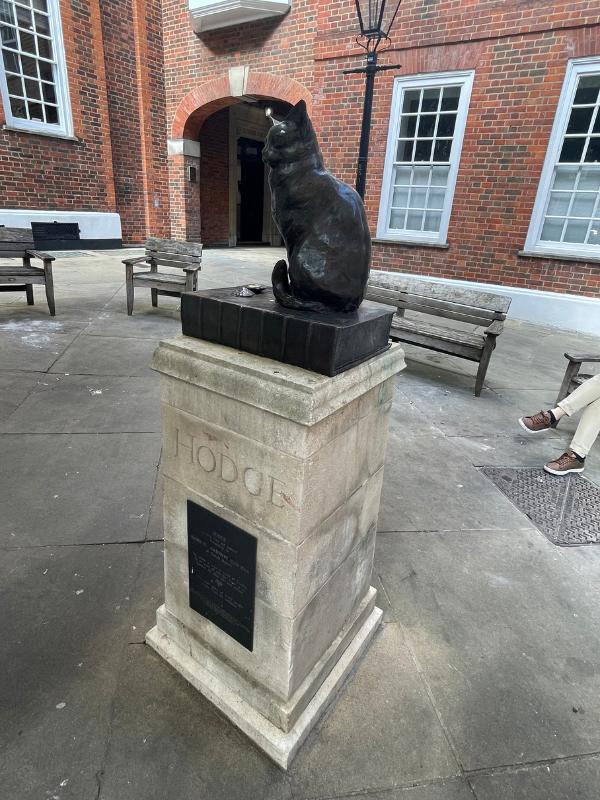
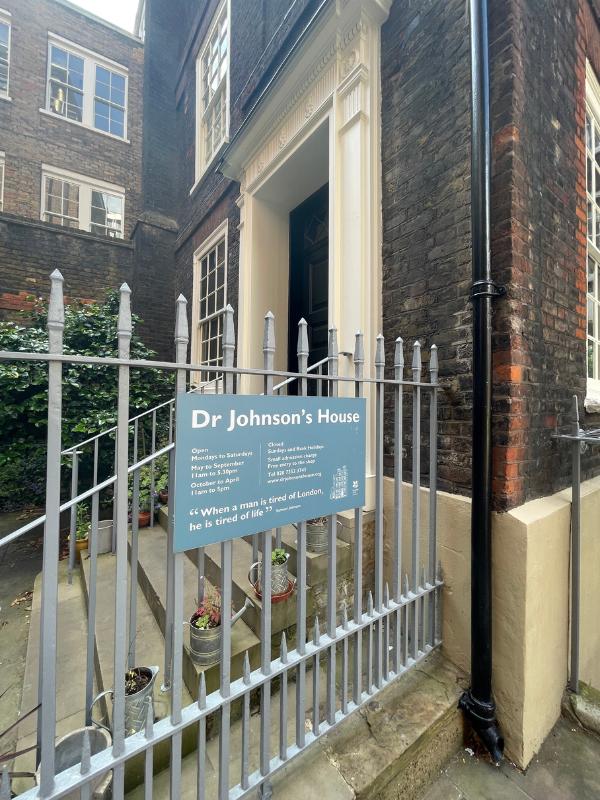
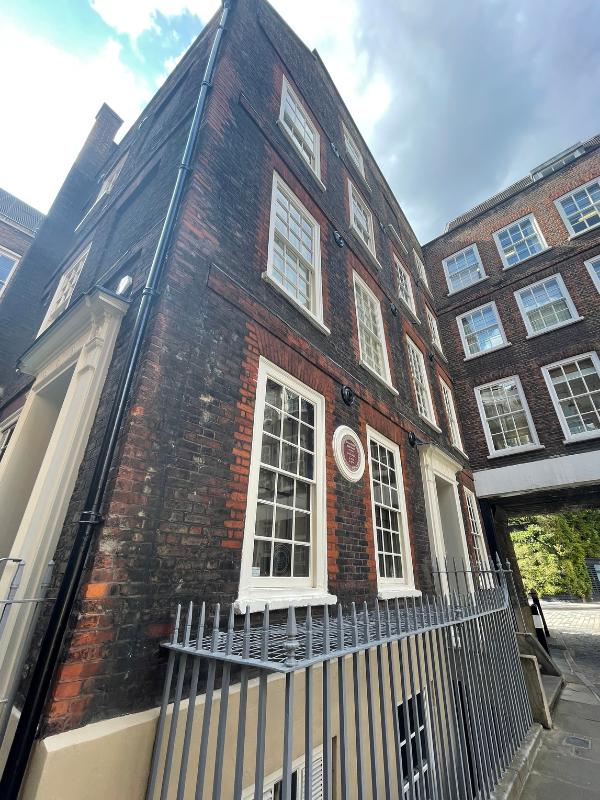
Dr Johnson’s House is the former home of Samuel Johnson, an 18th century writer. It’s Grade I listed, and located just off Fleet Street on Gough Square.
As well as being a key part of literary history, the house is the only one of 18 places where Johnson lived that’s still standing. It’s also one of the only surviving late 17th century homes in the City.
You can see the fully restored house, which features furniture, portraits and prints from the era. Exhibits will also inform you regarding Johnson’s life and literary works.
The pub tour mentioned above includes a walk-by past Dr Johnson’s House.
Click here to book a pubs walking tour including Dr Johnson’s House
Where to Stay in the City of London
Hotels
- £££ – Four Seasons Ten Trinity Square | 5* | Restaurants & bars, pool, spa, & gym | On the eastern edge of the City of London
- ££ – Doubletree by Hilton London | 4* | Restaurants & bars, gym, & room service | Near Sky Garden
- ££ – Club Quarters Hotel St Pauls | 4* | Gym & room service | On Ludgate Hill
- ££ – Novotel London Tower Bridge | 4* | Restaurant & bar, gym, & room service | Near Fenchurch Street station
- ££ – CitizenM Tower of London | 4* | Restaurant & bar | Above Tower Hill tube station
- £ – Z City Hotel | Bar & 24-hour reception | Near St Paul’s Cathedral
Holiday rentals
- 1 bed for 2 – Big City apartment | 1 bed & 1 bath | Between Aldgate & Tower Hill
- 1 bed for 4 – Dock view flat | 1 bed & 1 bath | Between Tower Bridge & docks
- 2 bed for 4 – River houseboat with deck | 2 beds & shower room | On the Thames
Where to Eat in the City of London
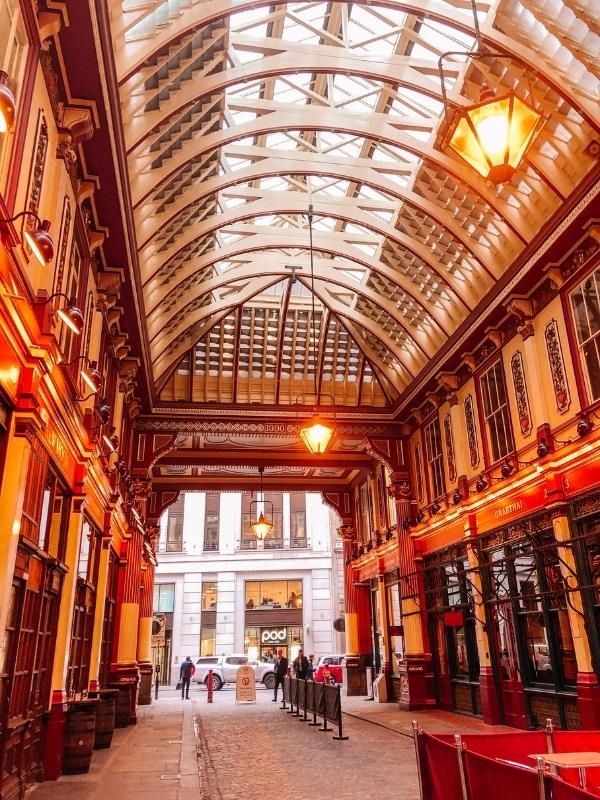
La Dame de Pic
This restaurant at the Four Seasons Ten Trinity Square boasts two Michelin stars, and offers refined French fare served in a glamorous setting.
City Social
Jason Atherton is behind this restaurant, and is one of the UK’s top celebrity chefs. The inventive, Michelin-starred menu makes creative use of native ingredients.
Club Gascon
A Michelin-starred restaurant and wine bar specialising in food from southwestern France.
Duck & Waffle
Duck & Waffle has the honour of being London’s highest restaurant. The Bishopsgate eatery is on the 40th floor, and has full length windows so you can make the most of the views. Menus focus on British and European dishes, and it’s open 24 hours a day.
Helix
Helix restaurant and Iris bar are located within the iconic Gherkin skyscraper. Book for afternoon tea, fine food made from British produce, or cocktail hour.
KERB Gherkin
Head to the Gherkin if you’re in the area on a Thursday between 11.30am and 2pm, when six to eight traders per week sell street food from all over the globe.
Darwin Brasserie
Seasonal British food and sky-high views are what it’s all about at this Sky Garden restaurant.
Sweetings
Established in 1889, Sweetings is all about fresh seafood. In fact its history goes back to 1830, when the family started selling fish and oysters. The restaurant has been in the current building for over a century.
Bloomberg Arcade
This arty, contemporary food court offers coffee, wine, and food ranging from burgers to poke bowls, Indian dishes, noodles, and more.
Leadenhall Market
Find a selection of eateries at historic Leadenhall Market in the City of London. From casual pubs to family-friendly places and fine dining, there’s something for everyone here. The market appeared in the Harry Potter film series.
Where to Shop in the City of London
Leadenhall Market
Everything from food to fashion, and a whole lot more besides, is sold under the curving dome of character-packed, Harry Potter star Leadenhall Market on Gracechurch Street.
One New Change
The best place to shop for the high street fashion brands favoured by stylish Brits. Pick up clothing and accessories here, sold at everyday prices.
The Royal Exchange
If upmarket brands are your bag, head to the Royal Exchange. Respected names like Tiffany, Fortnum and Mason, and Jo Malone sell fine jewellery, top quality food, luxury toiletries, and more.
Christmas in the City of London
There’s plenty of things to see and do from November to early January in the City of London. Look for the huge Christmas tree at Leadenhall Market, shop for gifts at St Paul’s Christmas market, and see carol singers at the cathedral and churches.
You can also enjoy festive menus at local restaurants, look at the dazzling light displays, and spot decorations and trees all over the square mile.
How to Get to the City of London
Underground stations
- Aldgate – Circle and Metropolitan lines
- Barbican – Circle, Hammersmith & City and Metropolitan lines
- Blackfriars – Circle and District lines
- Liverpool Street – Central, Circle, Hammersmith & City, and Metropolitan lines
- Mansion House – Circle and District lines
- Moorgate – Circle, Hammersmith & City, Metropolitan and Northern lines
Train stations
- Cannon Street
- Fenchurch Street
- Liverpool Street
- Moorgate
The City of London FAQs
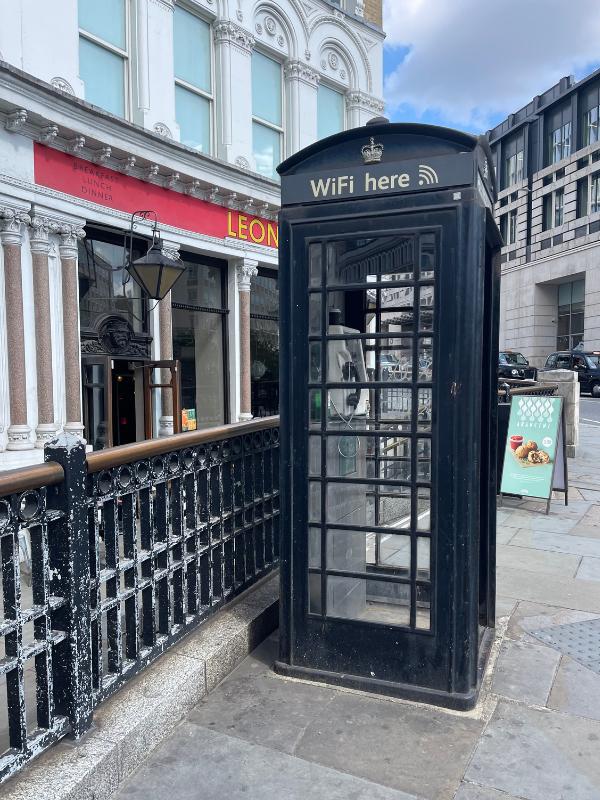
What’s special about the City of London?
The City of London is the oldest part of the city, and covers an area known as the Square Mile, as it’s around that size. It has its own government and Lord Mayor, and even an independent police force. As the financial heart of the UK capital, this is also where you’ll find the Bank of England and the London Stock Exchange.
What’s the difference between London and the City of London?
“London” refers to the vast conurbation of the British capital. The “City of London,” by contrast, is about a square mile in size, and is the financial district. This is also the most historic part of London, harking back to Roman times and Londinium.
The City of London Tips
The working week
Some city pubs and other places close on weekends. This is because life in this part of London is tailored to those who work in the City, which is only from Monday to Friday. This can sometimes mean cheaper rates for accommodation, as hotels in this area are geared to business travellers.
What Will You Do in the City of London?
The City of London has lots to offer the visitor, and is the oldest part of this great city. Whether you’re into cathedrals and churches, finance, cultural events, fine dining, or sky high views, make sure you don’t miss out on the square mile!
Read next – London area guides
- Things to do in Covent Garden & Holborn
- Things to do in Tower Hill and Tower Bridge
- Things to do in Westminster (including Victoria/Charing Cross and Trafalgar Square)
- Things to do in Kensington (including South Kensington)
- Things to do in Greenwich
- Things to do in Mayfair
- Things to do in Southwark & Bankside
- Things to do in Leicester Square and Soho
- Things to do in Bloomsbury and Fitzrovia
- Things to Do in Belgravia & Knightsbridge
- Things to do in Notting Hill
- Things to do in East London (Shoreditch & Spitalfields)
- Things to do in Marylebone
- Things to do in Paddington
- Things to do in Chelsea
- Things to do in Battersea
- Things to do in Piccadilly Circus
London Travel Guide & Itinerary Planner Ebook
(+ 4 BONUS ebooks)
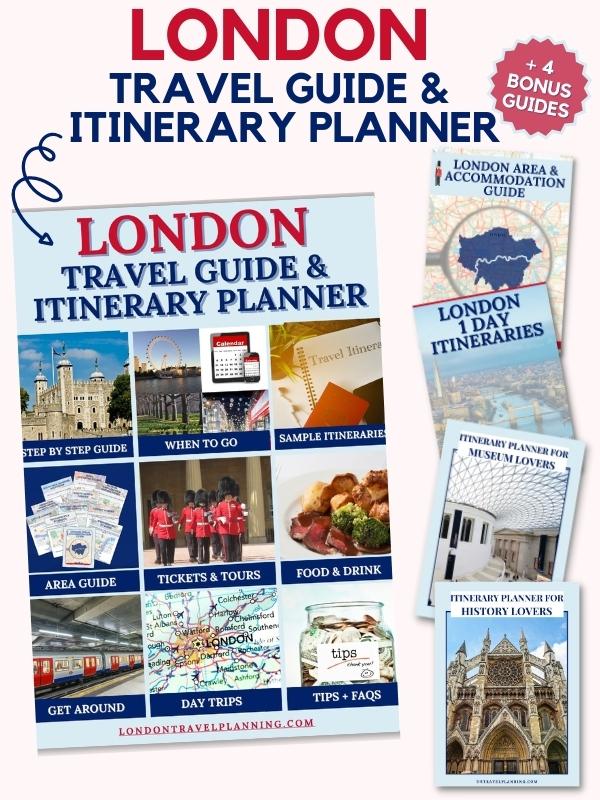
Welcome to our ultimate London travel guide and itinerary planner ebook! If you’re planning a trip to the vibrant city of London, then you’ve come to the right place.
Our comprehensive travel guide and itinerary planner is designed to help you make the most of your time in this incredible city.
But that’s not all – you’ll also receive four bonus eBooks to help you make the most of your trip.

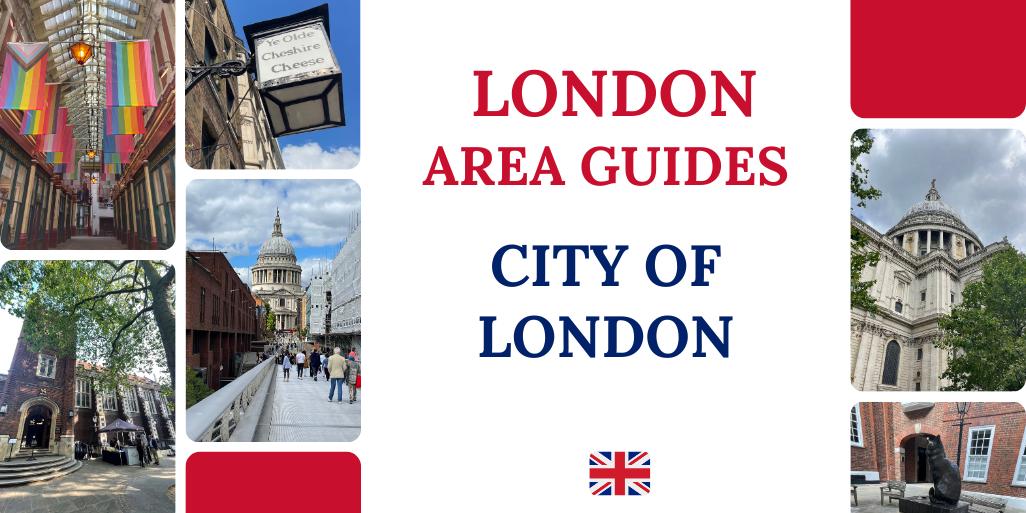
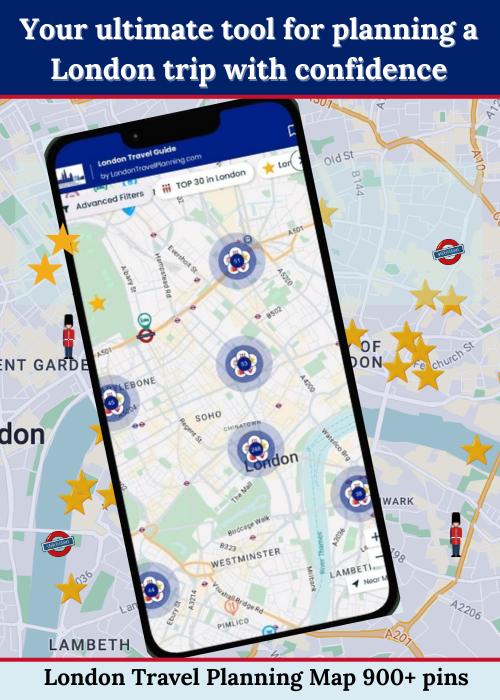
![The Ultimate Self-Guided Notting Hill Walking Tour [+ map]](https://londontravelplanning.com/wp-content/uploads/2024/07/Ultimate-self-guided-Notting-Hill-walking-tour-768x384.jpg)
